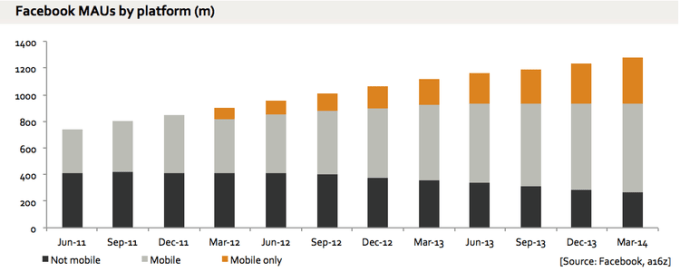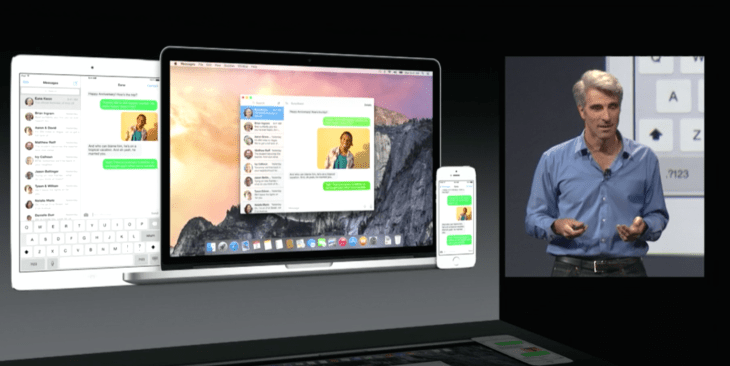At Macworld 2001, Steve Jobs famously introduced the “digital hub” strategy for the Mac, making it the device where all of the single-purpose gadgets for things like recording movies or playing music would be managed. At this year’s WWDC event, Apple showed that the iPhone is the new hub, and your Mac, iPad, and everything in the cloud is now just an accessory.
This is quite a pivot for Apple — at Steve Jobs’ last WWDC keynote, he declared that iCloud would be the new center of everyone’s digital lives: “We’re going to demote the PC and the Mac to just be a device.”
So far, iCloud hasn’t really lived up to that promise. While things like Contact syncing across devices work seamlessly on iOS, developers found that using the service to store data didn’t work as well as Apple had promised, forcing them to roll their own solutions or integrate offerings from Dropbox, Amazon or Google.
Meanwhile, a massive portion of total device usage shifted from laptops, desktops and tablets to phones. As Andreessen Horowitz analyst Benedict Evans wrote in April: “It may be better to think of tablets, laptops and desktops as one ‘big screen’ segment, all of which compete with smartphones, and for which the opportunity is just smaller than that for smartphones.”
We can look at Facebook’s monthly average user numbers to get an idea of how this trend is reflected in real-world usage. There are more people who only access the service via mobile devices than there are desktop – and laptop-only users, and 79 percent of users spend some of their time on the service via mobile:

Graph courtesy of Andreessen Horowitz analyst Benedict Evans.
With iOS 8, Apple encourages this trend by pushing nascent ecosystems to focus on mobile. Nearly every aspect of the “new” ecosystem Apple showed this week revolves around having the iPhone as the center of your digital experience:
- Placing calls and sending SMS messages in Mac OS X Yosemite requires access to your iPhone.
- HealthKit and the new Health app make your iPhone the main repository for information from all of your fitness and dietary apps and sensors, putting the iPhone at the center of an entire burgeoning ecosystem unto itself.
- Similarly, HomeKit puts your iPhone in control of any smart device in your home. Notably, HomeKit is also the first time Apple has given developers a chance to expand Siri’s vocabulary themselves — users will be able to define rooms and “zones” in their homes in order to give Siri commands like “Siri, turn off all the lights in the kitchen” or “Siri, turn on the lights downstairs,” for example.
- CarPlay transforms the infotainment system in your car into a dumb interface for the iPhone to take over, with “Hey, Siri” making the entire experience hands-free when your device is charging.
- Touch ID will be available to third-party developers, making the iPhone the most secure way to access things like banking applications or private messages.
- With Apple using peer-to-peer connections for AirPlay in iOS 8, pushing video or game content to the Apple TV won’t even require a Wi-Fi network.
The iPhone may not be as powerful as your home computer, but it’s good enough, almost always on your person, and packs software features and sensors that wouldn’t really make sense on a desktop machine.
iCloud is what makes the magic happen in iOS 8, but it does so by facilitating your interaction with the world immediately around you and your device. That’s what moving away from the desktop (and the cloud) allows. It makes computing more personal and more attached to the world we actually live in.
The tagline for Apple’s latest commercials has been “With the power of iPhone 5s, you’re more powerful than you think.” They’ve shown how it’s used to express our creativity, to take better care of our bodies — to be more human.
